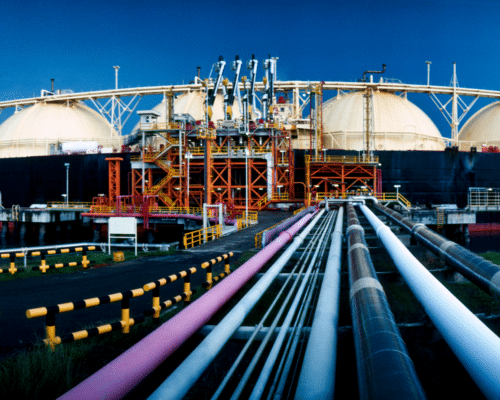The Growing Burden of Japan’s Climate Change Impact
Moses.Cao / Shutterstock.com
24 April 2023 – by Heba Hashem Comments (0)
The impact of climate change on Japan cannot be ignored. As summer approaches in the Northern Hemisphere, people in Japan are dreading what this season could bring. Last year, the country endured one of its most brutal heatwaves. Temperatures in Tokyo skyrocketed above 35°C in June. And in the city of Isesaki, northwest of the capital, they reached 40.3°C.
Nearly 4,500 people were hospitalised across Japan due to heatstroke or heat exhaustion during the summer of 2022.
“Temperature thresholds vary from person to person, but once it becomes around 105°F (40.5°C) or more, health consequences become more widespread,” Dr. Brigham C. Willis, founding dean at the University of Texas’ medical school, said.
Impacts of Climate Change on Japan
With cooling demand at its highest, the 2022 heatwave put tremendous pressure on Tokyo’s grid. The government issued its first-ever energy shortage warning as the capital grappled with potential shortages of increasingly expensive energy.
It called on businesses and households to reduce energy usage and advised government workers to work in the dark. Across the country, supermarkets switched off lights in freezers, while homeware stores unplugged electrical appliances.
Even with these precautions, blackouts hit parts of Japan, preventing people from using their air conditioners when they most needed them.
Conserving electricity during a blistering heatwave is too big of a risk for Japan’s households. An estimated 28.7% of the population is elderly and more susceptible to health consequences because of extreme heat.
“The elderly are biologically, physiologically predisposed to be more vulnerable to heat-related injuries, and more than a quarter of Japan is above the age of 65. The risk of heat stress and stroke without any attempts to adapt would be very high in Tokyo,” Winston Chow, a climate scientist from the College of Integrative Studies at Singapore Management University, told CNN.
Recurring Heatwaves Need Climate Change Adaptation
While local factors, such as urbanisation effects, contribute to heatwaves and other extreme weather events, human-induced climate change has an especially strong influence. Global warming triggered by climate change made the 2022 heatwaves in India and Pakistan 30 times more likely.
With global temperatures on the rise, the frequency of deadly heatwaves has dramatically increased in Japan. In August 2021, several Olympic athletes in Tokyo collapsed following the event as the city’s temperature hit 40°C.
The summer of 2019 was worse. An estimated 57 people died from heat-related medical issues across Japan, and more than 18,000 were hospitalised. And in 2018, scorching temperatures claimed 138 lives and sent more than 71,000 people to hospitals. The tally of hospitalisations outstripped the previous all-time high of 58,729 registered in the summer of 2013.
“The combination of population ageing and increased temperatures have meant that the number of people requiring emergency transport for heatstroke has been increasing in Japan,” a 2022 study published in Japan’s Journal of Rural Medicine confirmed.
Climate Change Effects and Economic Impact on Japan
Japan’s summer months have always been uncomfortably hot and humid. But, climate change is turning discomfort into danger and risking the economy.
Rising temperatures are now disrupting the cherry blossom season, which brings enormous tourism income to Japan. At the same time, warming waters are changing the migration of salmon, tuna and squid, all staples of Japanese cuisine. The resulting shortages threaten fishing workers’ livelihoods and drive up market prices for the fish, making them out of reach for many families.
Furthermore, global warming is increasing Japan’s risk of extreme weather events. A recent study found that human-caused climate change increased the likelihood of extreme rainfall during Typhoon Hagibis by 67%. Typhoon Hagibis was a large tropical cyclone that hit Japan in October 2019. It killed 74 people and flooded nearly 10,000 homes.
Overall, instances of torrential rain have increased by 40% in Japan over the past 30 years. Between 2017 and 2021, the predominantly mountainous country witnessed an average of 2,400 landslides per year.
Will Heatwaves Return to Japan in 2023?
Japan expects its annual temperature to increase by 1.1°C to 4.4°C over the next century compared to the previous one. In parallel, the annual number of days with temperatures of 30°C or higher could increase by up to 52.8 days. The exact increase depends on the future level of greenhouse gas concentrations.
Another intense summer could be devastating for Japan, considering its winter energy crunch is expected to continue through 2023. Tokyo Electric Power Company reportedly expects a reserve capacity margin of just 3.3% in July. Chubu Electric, which serves the Nagoya region, expects a reserve margin of 4.3% in the same month.
These figures are barely over the required 3%. When the reserve margin dips below 3%, the government asks consumers to reduce their consumption to avoid a blackout risk.
Despite the tangible impact of climate change on Japan, its new Green Transformation strategy relies heavily on the use of polluting fossil fuels, while the country should reduce greenhouse gas emissions and take adaptation measures.
As the country prepares for the 2023 G7 presidency in May, it must convince the world that it can achieve its pledge of carbon neutrality by 2050. More urgently, Japan will need to invest in climate adaptation solutions to cope with the reoccurring and crippling heatwaves and natural disasters.




